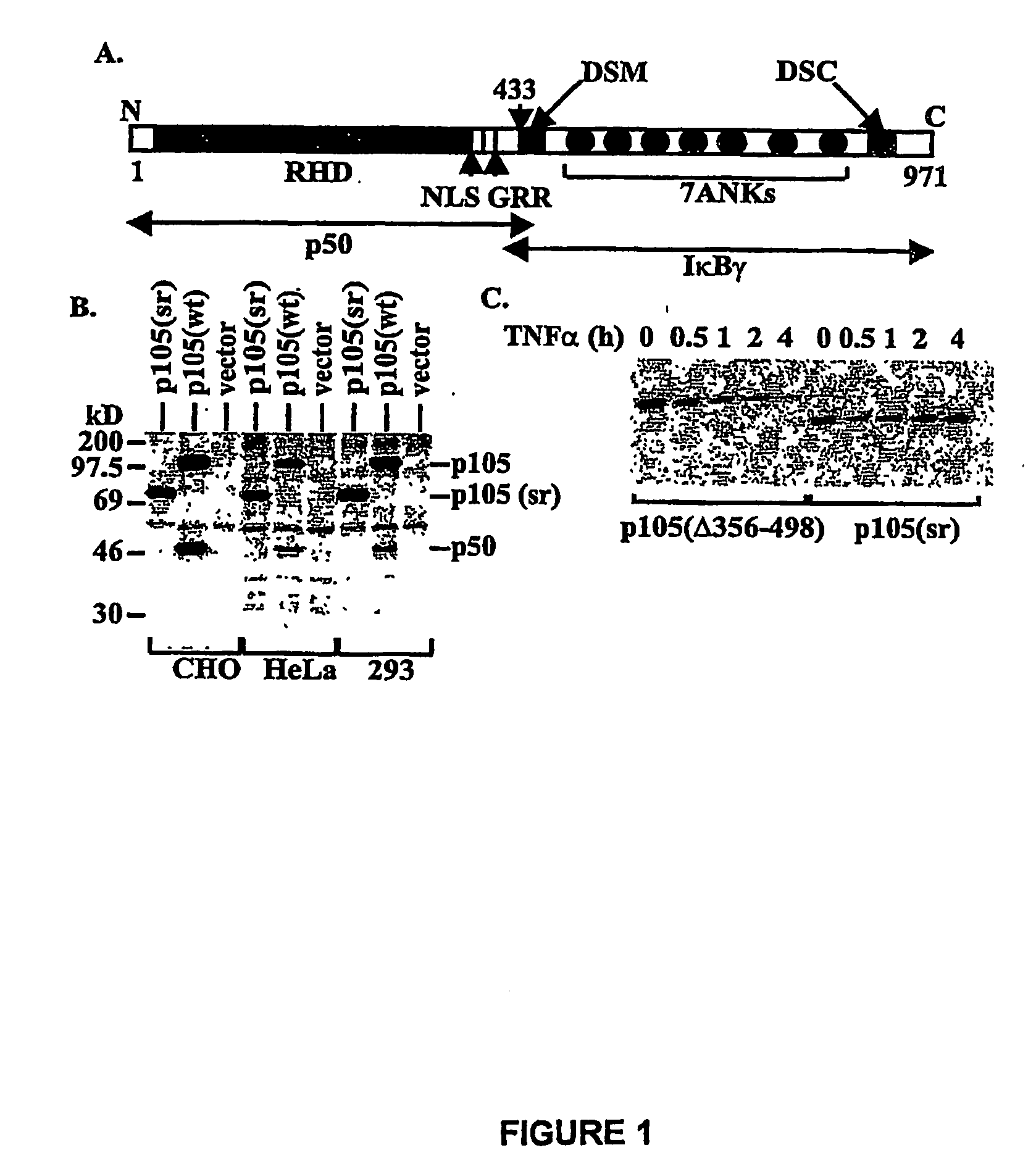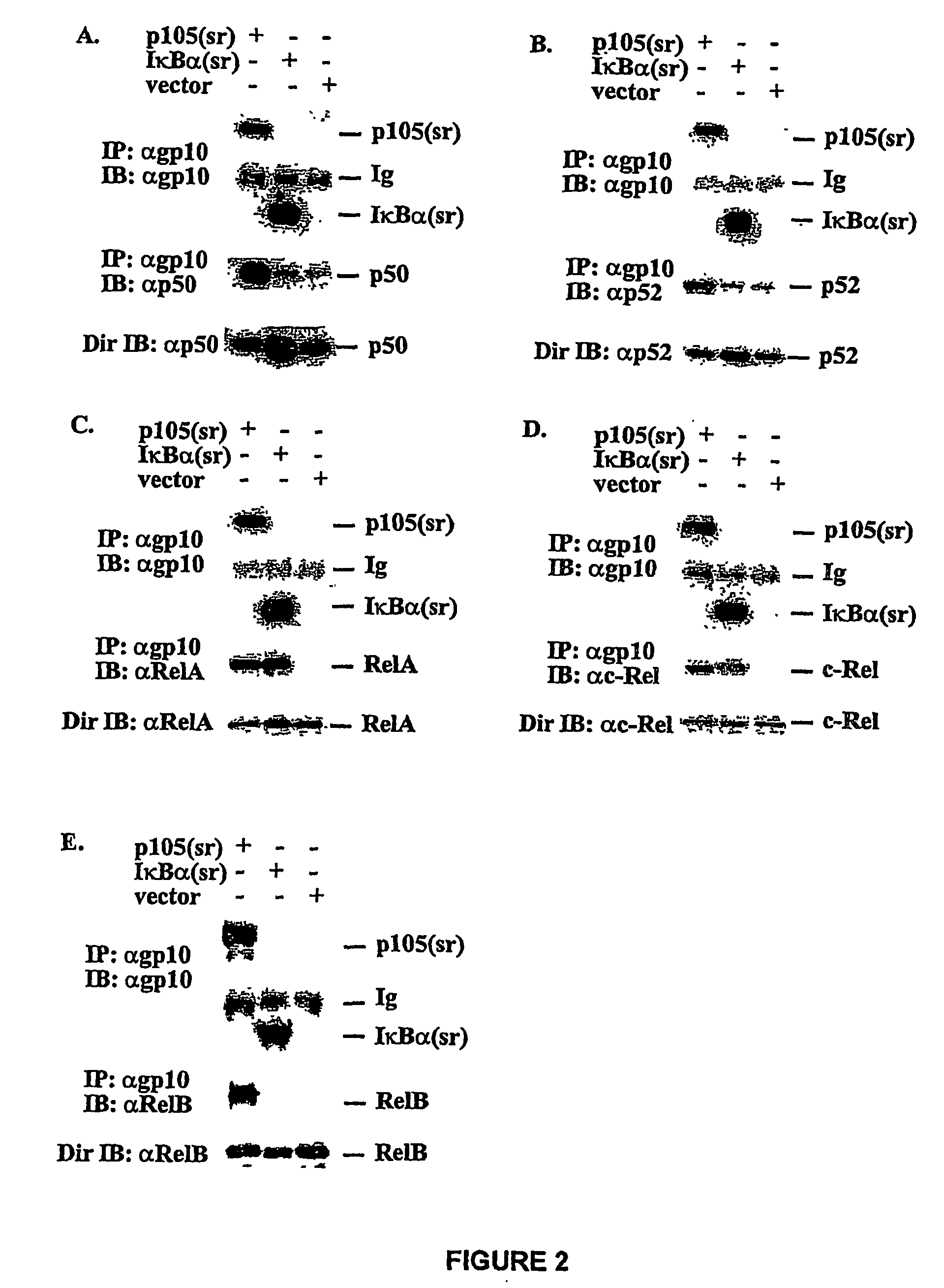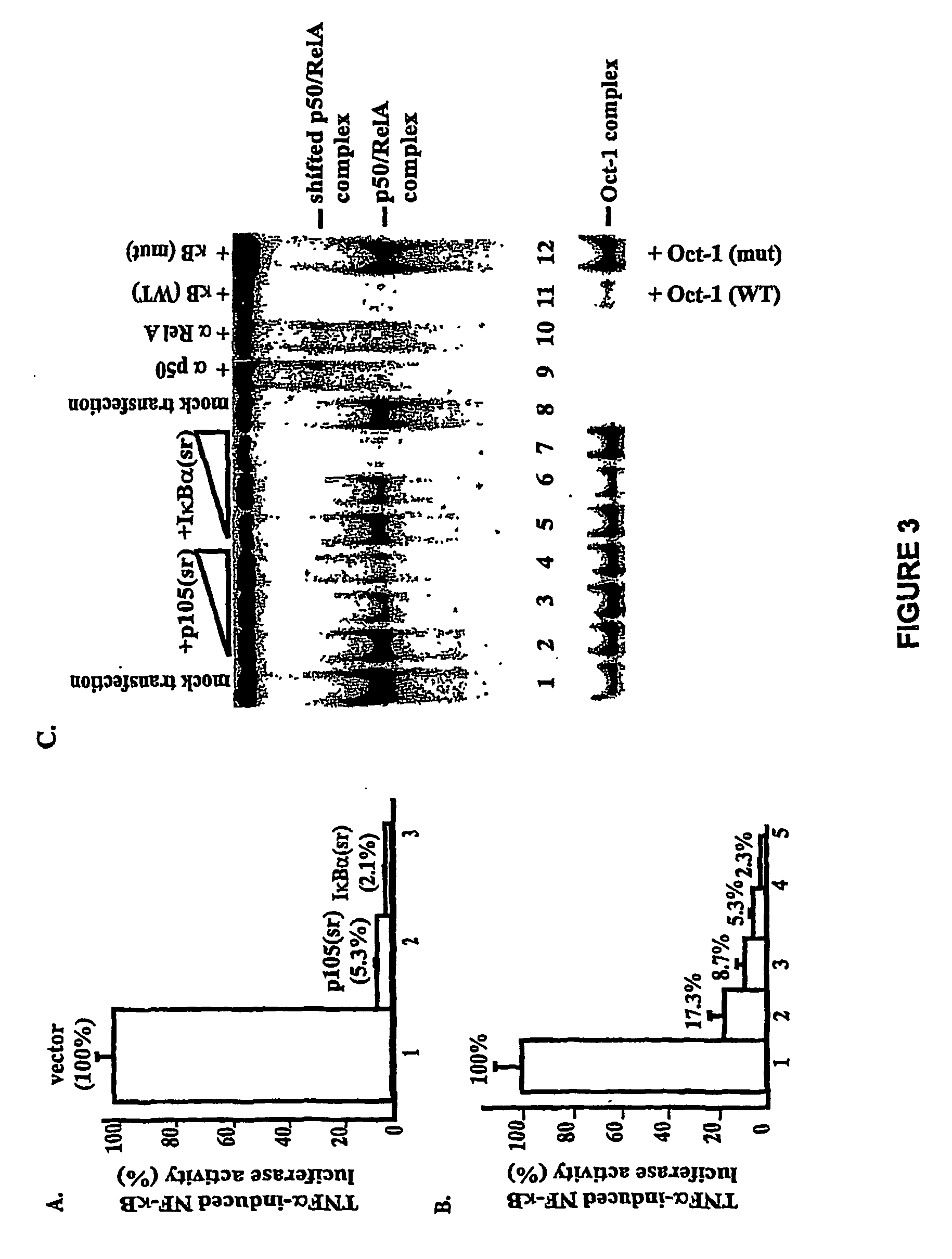Methods and Compositions for Inhibition of Nuclear Factor kappaB
- Summary
- Abstract
- Description
- Claims
- Application Information
AI Technical Summary
Benefits of technology
Problems solved by technology
Method used
Image
Examples
example 1
Construction of p105(sr)-
[0114]PCR was used to generate two deletions within murine ntkbl gene. Two sets of primers were used to generate deletion in the middle region first: 5′-CGGGATCCATGGCAGACGATG, SEQ ID NO. 9 and 5′-CCCAAGCTTTTCCTCTTTGTCTTTGATTTC (SEQ ID NO. 10) to amplify the first half of nfrkbl and 5′-GACTAGTAAGGCTCTGCAGCTCGCC (SEQ ID NO. 11) and 5′-GCTCTAGACTAAATTTTGCCTTCAATAGG (SEQ ID NO. 12) to amplify the second half of the gene. The DNA fragments were cloned into the expression vector pEVRF, with a blunted Hind III site from the first fragment directly ligated to the uncut 5′-end of the second fragment to preserve the correct reading frame. The above plasmid was then used as the template, and the primers 5′-CGGGATCCATGGCAGACGATG (SEQ ID NO. 13) and 5′-GGAATTCGGATCCTGGTAGTATATCATCAG (SEQ ID NO. 14) were used for PCR. The PCR fragment was subsequently cloned into a modified pEVRF that attaches a 12-residue epitope tag from the bacterial phage T7 gene 10 protein at the N-t...
example 2
Cell Culture Aid Transfection
[0115]Human embryonic kidney 293 cells, human cervical carcinoma HeLa cells, Chinese hamster ovary cells with a stably transfected human CD14 surface marker (CHO-CD14), and several mouse skin cell lines were used in the studies. HeLa and 293 cells were cultured in Dulbecco's modified Eagle's medium supplemented with 10% fetal bovine serum, 2 mM L-glutamine, and antibiotics and CHO-CD14 cells in RPM1640 medium with the same supplements. The cells were seeded in either 24- or 6-well plates and transfected with LipofectAMINE (Invitrogen) according to the manufacturer's instructions. Skin papilloma cell line MTI / 2, carcinoma line CH72T4 (spindle cell carcinoma), and the control keratinocyte line C50 were cultured in minimum essential Eagle's medium with Earle's balanced salt solutions supplemented with 4% (for MT1 / 2) or 1% (for C50 and CH72T4) fetal bovine serum, L-glutamine, antibiotics, and other growth supplements. The skin cells were transfected with FuG...
example 3
Measurement of Protein Concentration
[0116]A Bio-Rad protein concentration kit was used according to the manufacturer's instructions, with bovine serum albumin as the standard.
PUM
 Login to View More
Login to View More Abstract
Description
Claims
Application Information
 Login to View More
Login to View More - R&D
- Intellectual Property
- Life Sciences
- Materials
- Tech Scout
- Unparalleled Data Quality
- Higher Quality Content
- 60% Fewer Hallucinations
Browse by: Latest US Patents, China's latest patents, Technical Efficacy Thesaurus, Application Domain, Technology Topic, Popular Technical Reports.
© 2025 PatSnap. All rights reserved.Legal|Privacy policy|Modern Slavery Act Transparency Statement|Sitemap|About US| Contact US: help@patsnap.com



